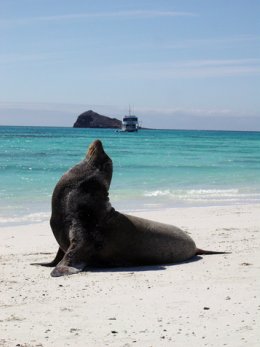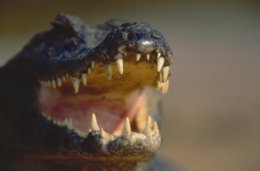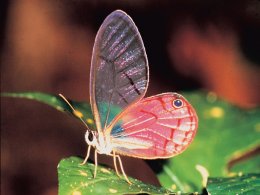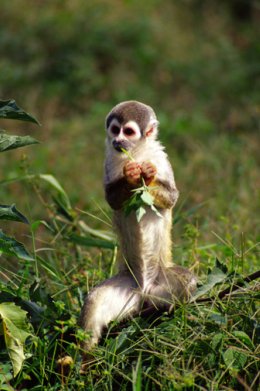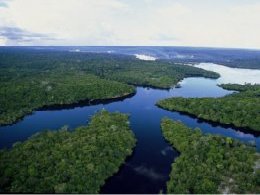Fri Day 1 Guayaquil Fly to Guayaquil. On arrival you will be transferred to your hotel located downtown Sat Day 2 Guayaquil (B) Day at leisure to get adjusted to South America time . Suggest visit the Iguana Park and Malecon waterfront Sun Day 3 Guayaquil -Galapagos (B,L,D) You will be transferred to the airport for your flight to Galapagos. Please note there is a US$20 immigration fee payable on departure One of the world's greatest treasures of natural history lies in the bewitching Galapagos Islands, famed for its fearless and unique wildlife, and is the highlight of most trips to Ecuador. The Galapagos Islands have been named after the giant Galapagos Tortoises. The archipelago, 1000 Km. (600 miles) off Ecuador's Pacific Coast originated from undersea volcanic activity, six million years ago. The archipelago's 13 major islands, 6 smaller ones, and scores of islets are all part of Ecuador's National Park system. In 1835, the English naturalist Charles Darwin visited the islands and discovered this "living laboratory" which inspired his writings on the Theory of Evolution. Many of the animals on the Galapagos Islands have developed into different species from their continental relatives, and because they have never experienced man as a predator, they show no fear of humans. The world's most wondrous group of islands is yours for unhurried exploration. Follow the nature trails; enjoy the amazing sights, wade and even dive among the animals of land and sea. The sixteen passenger “ Aida Maria “offers a great combination of comfort, style and economy for tours in the Galapagos. Each of the eight cabins has a private bath and hot shower, air conditioning and an ample external deck to enjoy sunny Galapagos days. Its design is based in efficiency and comfort with ample social areas and 8 cabins 2 in main deck, 2 in upper deck and 2 in solarium providing optimum comfort for your experience exploring the Galapagos.. All meals and shore excursions are included . Accommodation in 2 berth cabins . Please note that the Galapagos National park fee of USD100 is to be paid in cash on joining the cruise. As you prepare to land in San Cristobal, peer out the window. The landscape below will seem out of this world - a place like no other. The Galapagos Islands are unique to the world and you are about to see why. Your bilingual naturalist guide will greet you at the airport and assist you through customs. After lunch we will go to the interpretation center, the local branch of the Galapagos National park service where your guide will explain to you about the formation of the islands, how the flora and fauna arrived and got established in Galapagos as well as visiting the corrals where we have several species of giant tortoises under the care of the National park service. Your bilingual naturalist guide will greet you at the airport and meet you after customs. During lunch he/she will introduce you to the islands, specifically the flora and fauna that you will encounter at our first destination, Las Bachas Beach. On the sandy white beaches of Las Bachas you will get a close look at a sea turtle nesting area as well as a lake frequented by pink flamingos and other migratory birds. Afterwards, you'll cool off with a dip in the beautiful, blue Pacific Ocean. As this is the first evening together, the crew will invite everyone to a pre-dinner cocktail on the yacht before the welcome dinner. If the night is clear, as it usually is, the stars above will sparkle; look for the Southern Cross, the Big Dipper (turned up-side down!) and Orion. Mon Day 4 Genovesa Island (B,L,D) Early in the morning you'll have breakfast and then you'll disembark at Genovesa "Tower" Island, which is located in the northeastern part of the Galapagos (less than half a degree north of the equator). At "Tower" Island you'll anchor at Darwin Bay, which is located on the southern part of the island, and is actually the caldera of an extinct, partially eroded volcano, with the surrounding cliffs forming the inner lining of the rim. While the origin of the name "Tower" is not known, one can imagine it had something to do with these towering cliffs. The tour will be a long, fairly-easy walk, but it is usually hot and dry here, so you may want to carry some water. After a wet landing on a coral beach the trail begins in an area where there are several swallow-tailed gulls. As you walk back from the beach, you'll see a variety of Opuntia cactus and mangroves Tower is an outpost for many sea birds (as Española is in the south). Interestingly, there are almost no land reptiles on Tower, only very small marine iguanas. This is attributed to the direction of the ocean currents, which wouldn't have carried the terrestrial animals here. Visit El Barranco during the afternoon then return to the boat for dinner. Tues Day 5 Bartolome Island (B,L,D) Bartolome Island, which at its highest point is 114 meters, is one of the most photographed vistas in the archipelago. This island is quite young and quite volcanic, therefore, it's relatively unpopulated; only a small handful of die-hard plant and animal species have survived long enough to call this lava-land home. After the visit to Bartolome Island you'll visit nearby Sullivan Bay. At the turn of the century a huge lava flow spilled right down to the sea and today you can stroll across this black volcanic expanse, admiring its time-frozen ripples, bubbles and ropes.
Wed Day 6 Daphne Island (B,L,D) Early in the morning you'll arrive to Daphne Island, a cone formed by the accumulation of volcanic ash, which is home to thousands of birds such as blue footed boobies, frigate birds, tropic birds, and many more. We wont go ashore here, but we'll navigate around this volcanic cone, so binoculars are recommended to get a good look at the birds. Daphne has been a great research site on which many scientists have spent years studying the behavior of Darwin's finches. After this visit you'll move on to our next site, Black Turtle Cove, which is a red mangrove lagoon on Santa Cruz and is a nursery for many sharks and rays. It's also a great location to observe mating turtles around this time of year. You'll see large groups of resting White-Tip Reef Sharks, schools of Golden Rays and Spotted Eagle Rays, and a few juvenile Scalloped Hammerhead Sharks and Black-Tip Sharks. The water very calm so we often used paddles instead of the loud panga engines to move around the area. After lunch you'll navigate for a couple of hours to Cerro Dragon, where you'll make a dry landing on lava rocks. Cerro Dragon is a small bay on the west coast of Santa Cruz and got its name from the many land iguanas that live in the area. Land iguanas are endemic to the Galapagos Islands where they have found good mating and nesting areas. Thurs Day 7 Santa Cruz Island (B,L,D) Charles Darwin Station. After breakfast you'll sail to Santa Cruz Island, where you'll visit the world-famous Charles Darwin Station, a non-profit institution that dedicates itself to studying and protecting the flora and fauna of the Galapagos. This is one of the best places to see land tortoises, including Lonesome George, the last survivor of his subspecies. Then you'll visit the station's Tortoise Rearing Center. Here you can find baby, hand-sized tortoises, between the ages of one and five, and marvel at how they achieve such large sizes as adults (500 lbs. or more!). Galapagos tortoises are believed to have a lifespan of over 100 years, so the young ones have a long life ahead of them as long as they receive the protection they need. Aside from the Station headquarters, Santa Cruz Island is home to the largest town and economic center of the Galapagos, Puerto Ayora. In this portside town you can buy souvenirs (postcards, t-shirts, books, etc.) of the islands. Check out the unique Galapagos ceramic shop near the entrance of the Charles Darwin Station. After shopping in Puerto Ayora and lunch on the boat (guests may dine in town if they desire), you'll explore the upper region, "parte alta" of the island, which is a moisture-rich area with fertile volcanic soils. You'll learn about the vegetation and animal life of this zone, often strikingly different than that found at lower elevations. Darwin's Finches, Yellow Warblers, and Bright Red Vermillion Flycatchers will fly in and out of the moss-covered trees. From this high vantage point you'll be treated to beautiful views of the surrounding archipelago. In the late afternoon you'll return to town. For those who wish to check out the nightlife, this is your chance; the boat will be docked in port most of the night. Fri Day 8 Floreana Island (B,L,D) Wake up and look out your porthole you will see Floreana, one of the greenest islands in the archipelago. Ask your guide to tell you about its mysterious history laden with rumors of witches, murderous baronesses, blackmail, and dubious disappearances. Your first stop is Punta Cormorant, where you'll follow a footpath to a lagoon inhabited by flaming-pink flamingos. You will also pass by Carolina Beach, a Sea Turtle nesting area and a superb spot for watching sea birds and sea rays. Back on the yacht, you'll skirt the island's coast until you arrive at La Corona del Diablo (the Devil's Crown), a sub-marine crater that offers some of the most spectacular snorkeling in the Galapagos. This is a great spot for seeing the wide array of tropical fish, many endemic to the islands, including purple sea stars and spiky sea urchins. The crater's most thrilling undersea creatures, however, are the white-tipped sharks. As with most of the creatures in the Galapagos they are unperturbed by your presence, so you can swim in their company freely and fearlessly. After returning to the boat for lunch you'll sail on to Post Office Bay, where the islands' original post office (really only a wooden barrel) was established in 1793. The current system still functions as it did three centuries ago: Visitors drop off unstamped letters and postcards AND pick-up whatever mail they can hand deliver themselves when they return home! (Try it, it actually works!). Sat Day 9 Española Island (B,L,D) Espanola is one of the most magical of all the islands. It is a place where the animals reign supreme and we humans are merely guests. As your dingy brings you to shore you'll see Sea Lion pups sunbathing with Marine Iguanas and Blue Footed Boobies nesting in between, and nearby may be a Galapagos Hawk. If it is Booby mating season watch the bonded pairs do the infamous Booby dance (if it's not mating season, ask your guide to demonstrate - after all it's their job to teach you about the local fauna!). As you follow the footpath around the island, you will pass hundreds of Blue Footed Booby nesting sites including one colony of masked boobies. There is a good chance you'll see the thief-like Frigate Bird (which has the habit of stealing other birds' food), as well as the stunning Red-Billed Tropicbird and the nocturnal Swallow-Tailed Gull. If it is the right time of the year (mid-April to December) you'll also encounter the giant Waved Albatross. Apart from a few pairs that breed on Isla de Plata, off the Ecuadorian mainland, all of the world's 12,000 Waved Albatross breed on Espanola Island. At the end of the breeding season, the entire population leaves the island and heads out to sea, where they spend years without touching land; four or five years may pass before the fledglings return to Espanola. As you make your way around the island you'll pass by El Soplador, a giant blowhole that explodes to heights reaching 25 feet. In the nearby tide pools you can often find lounging sea lions enjoying the blowhole's misty spray. Following lunch on board the yacht, you'll visit Garner Bay, a great place for sunbathing, swimming and snorkeling. Lionfish, Flycatchers, and Galapagos Hawks will keep you company as you relax under the rays of the evening sun. Dinner on the yacht completes your day. Sun Day 10 San Cristobal Island - Quito-Lima (B) On your last day of visiting the Galapagos you'll arrive early in the morning to San Cristobal, the capital of the Galapagos. The first site will be Isla Lobos, a very small islet made of volcanic rocks that gets its name from the colony of Sea Lions (Lobo de Mar in Spanish) that live there. Here you can observe the behavior and interaction of Sea Lions living in a small community. Before taking the flight back to the mainland you will have some time to visit the town on your own for last minute shopping or people watching in the Galapagos. Transfer to airport for your flight via Quito to Lima. Accommodation: Wyndham Costa del Sol Airport Hotel located opposite the airline terminal Mon Day 11 Lima - Puerto Maldonado- Tambopata (B,L,D) Transfer to the airport for the short flight to Puerto Maldonado where you will be met by your naturalist guide and transferred to a dugout canoe for the trip up the Tambopata River to the lodge. On the journey the vegetation changes from colonized deforested areas to virgin rain forest. A box-lunch is provided on board. On arrival you'll have a welcome drink and meet the rest of the staff. After dinner a night walk to find nocturnal animals or insects by the eye-shine a specialization for increasing the light and see better, about 50% of the animals are nocturnal in the rainforest. We will be out at the river's edge at night, scanning the shores with headlamps and flashlights to catch the red gleams of reflection from caiman eyes Accommodation: Refugio Amazonas Lodge Refugio Amazonas is built on a 200 hectare private reserve on the buffer zone of the Tambopata National Reserve. It is becoming integrated to the communities of Brazil nut extractors that surround it, attempting to extend the benefits of ecotourism to the families that commit to the sustainable use of the forest within this buffer zone. It is located ten minutes walking from the river. Tues Day 12 Refugio Amazonas -Tambopata Research Centre (B,L,D) Before breakfast ,a thirty minute walk from Refugio Amazonas leads to the 25 meter canopy tower. A bannistered staircase running through the middle provides safe access to the platforms above. The tower has been built upon high ground, therefore increasing your horizon of the continuous primary forest extending out towards the Tambopata National Reserve. From here views of mixed species canopy flocks as well as toucans, macaws and raptors are likely.After breakfast a few minutes hike from the lodge is a beautiful old growth patch of Brazil Nut forest that has been harvested for decades (if not centuries) where the precarious remains of a camp used two months a year by Brazil Nut gatherers can still be experienced. We will be demonstrating the whole process of the rain forest's only sustainably harvested product from collection through transportation to drying.Then a 4&1/2 hour journey by boat from Refugio Amazonas, in the pristine heart of the reserve, lies the Tambopata Research Centre.One and half hours into our boat journey, as we cross the confluence with the Malinowski River, we will leave the final traces of human habitation behind. Within the 700,000 hectare uninhabited nucleus of the reserve, sightings of capybara, caiman, geese, macaws and other large species will become more frequent. A 3-5km hike will lead us to overlooks commanding magnificent views of the Tambopata winding its way into the lowlands. The forest on this trail, regenerating on old bamboo forest, is good for Howler Monkey and Dusky Titi Monkey.After dinner attend a lecture providing a in depth look at the biology of macaws, their feeding habits, the theories for clay lick use, their breeding and feeding ecology, population fluctuations and the threats to their conservation Tambopata Research Center is built using a combination of traditional native materials (wood, palm fronds, wild cane and clay) and architecture and modern day eco-lodge technology. The lodge consists of one wing of 18 rooms connected by raised boardwalks to eight shared bathrooms, the research quarters and a dining room. The dining room is an open building that doubles as a bar.Rooms are small and hold two beds. The walls dividing each room are built using cane, and extend from the floor to about 2.5 meters height making each room private. The side that looks out to the forest does not have a wall or screening of any kind, acting as a large window facing the forest. The reason we have been able to incorporate this "luxurious" design into our lodge is because mosquitoes are not really a problem around the lodge clearing and the open section allows for an intimate contact with the rain forest.. Doors are replaced with drapes. Rooms are not soundproof. Each room has beds, mosquito nets, bedside tables and a rack of clothes hangers. Bathroom are shared, and have no hot water. The research quarters is a two story building usually full of scientists and their assistants from the macaw project. Wed Day 13 Tambopata Research Centre (B,L,D) On most clear mornings of the year dozens of large macaws and hundreds of parrots congregate on this large river bank in a raucous and colorful spectacle which inspired a National Geographic cover story. Discretely located fifty meters from the cliff, we will observe Green-winged, Scarlet and Blue-and-gold Macaws and several species of smaller parrots descend to ingest clay. Outings are at dawn when the lick is most active. They arrive in search of minerals and salts and the digestive properties of the clay particles themselves. On average several hundred Macaws and smaller parrots visit the clay-lick daily, including Scarlet, Blue and Yellow, Red and Green, Chestnut- fronted and Blue-headed parrots, among others. This clay-lick is considered one of the largest in the world. Following a late morning hike in the trail system in search of some of the nine species of monkeys present in the area, including Spider monkeys, Squirrel monkeys and Dusky titi monkeys as well as the elusive large mammals like Tapir, White-lipped peccaries and Jaguar. After lunch visit the Pond Platform-10 minutes upriver from the lodge is a tiny pond with a platform in the middle. It is a great place to spot waterfowl such as Muscovy duck, sunbittern and hoatzin along with the woodpeckers, oropendolas, flycatchers and parakeets that call this pond their home.After dinner you will have the option of hiking out at night, when most of the mammals are active but rarely seen. Much easier to find are frogs with shapes and sounds as bizarre as their natural histories Thurs Day 14 Tambopata Research Centre (B,L,D) Another outing at dawn when the macaw lick is most active. After breakfast hike the Terra Firme Trail An entirely different habitat characterized by smaller, thinner trees atop hills and slopes is covered by this five kilometer trail. Saddleback tamarins are frequently found here. As we walk near the limits of the swamp we will also keep our eyes open for rare tapir tracks. After lunch enjoy a hike on the Palm Swamp Trail.Growing on the remains of an oxbow lake and providing both arboreal as well as terrestrial mammals with fruits throughout the year, the aguaje palms are one of the most important food sources in the rainforest. Demand for these fruits and great conditions for planting rice, makes the palm swamp also one of the most threatened habitats. Fri Day 15 Tambopata -Puerto Maldonado - Rio Branco (B,L) An early start today to return by boat to Puerto Maldonado and connect by bus across the Peru-Brazil border to the town of Rio Branco . Accommodation Rio Branco Holiday Inn Sat Day 16 Rio Branco - Manaus (B) Depart this morning on your flight to Manaus . On arrival commence a guided walking tour by Rua Fernardo Ramos, Teatro Amazonas (Opera House), Palacete Provincial with Praça Heliodoro Balbi, visit to the Municipal Market and Fish Market with a view to the Manaus Harbour and stop outside Palácio Rio Manaus, capital of Amazonas, is located in the middle of the Amazon forest. In the early years of the 20th century the city of Manaus, became very wealthy and the most important cultural centre in the Northern Region of Brazil The old rubber barons dreamed of transforming it into a European style city and called it "the Paris of the Tropics Accommodation: Chez Lois Rois B&B Sun Day 17 Manaus - Amazon Lodge (B,L,D) Leave the hotel at 7:30 a.m. by car to the river port. Take a speedboat to the village Careiro da Varzea". Along the way we will pass by the Meeting of the Waters. It is where the Negro and Solimões Rivers meet to form the Amazon River, which flows all the way to the Atlantic Ocean. The two rivers run side by side without mixing for many kilometers and we will most likely be visited by a few curious river dolphins. After a stop in Careiro village, you will take a bus or van to the Manaus-Porto Velho highway then arrive at the Arara River Port, to take a speedboat on the Mamori River. This length of the trip is ideal for observing wildlife due to the abundance of the many varied species, such as: birds, alligators, fish, sloth, monkeys, and the famous giant Amazon water lilies (Vitoria Regia) which are named after Queen Victoria. Arrival at AMAZON TURTLE LODGE where lunch will be served. Later this afternoon there is a motorized canoe trip that will introduce you to the area. Throughout the duration of this trip you will experience the pristine and varied landscapes of the region, with the opportunity to observe and enjoy the great diversity of animals found in the area. The Amazon Turtle Lodge, located in the margin of the Tracajá Lake (approx. 100km southeast from Manaus), is a sustainable lodge with the idea of conservation and preservation of the region, as well as involving the local community, consisting of 23 families, having some of them as part of the staff. The main building is a combination of typical native's house with some modern style. In the first floor there is the reception, the Amazon Turtle bar and a cozy place for reading or playing cards. On the upper floor, the restaurant offers a great panoramic view, especially when the level of the waters is high. Besides the incredible landscapes and sunsets, it is also possible to appreciate the biodiversity rich in fauna and flora, close to rivers called igarapés e igapós (small channels formed by the floods); the ideal place for those who love nature! Mon Day 18 Amazon Lodge (B,L,D) Early this morning leave the lodge to embark on the sunrise and bird watching tour, a wonderful opportunity to experience the majestic Amazon and observe all the animals awaking with the rising of the sun. We will return in time for breakfast. After breakfast put on your walking boots and get ready for an exciting trek in the jungle, to learn about jungle survival techniques and medicinal plants with our experienced jungle tour guides. Enjoy lunch and time to relax until the next adventure- piranha fishing! Return in time for dinner at the lodge and then ll embark on a night trip to go alligator spotting. Tues Day 19 Amazon Lodge-Manaus (B) We will visit a native's house to learn more about their customs and culture. On the way back we will visit a cassava plantation so you can see from start to finish how the local native people make flour from the cassava, a staple food of the Northern Brazilian diet, usually eaten with rice and beans or fish. Travel back to Manaus this afternoon and transfer to the B&B Accommodation: Chez Lois B&B Wed Day 20 Manaus - Cuiaba - Pantanal (L,D) Transfer to the airport for early flight to Cuiaba On arrival commence the journey into the Pantanal, driving for 90 min before reaching the famous Transpantaneira Road. This raised dirt and gravel road is one of the best wildlife viewing areas in the world. Here you can admire the flora and fauna along the Transpantaneira and make several stops on the way to film or take photographs. Arrive at our Lodge mid afternoon. SouthWild Pantanal was once called Fazenda Santa Tereza, which was a traditional cattle ranch. Today, it is an eco lodge on 1,500 hectares of flooded lands situated on the banks of the wildlife rich Pixaim River. Here you are deep in the Pantanal and from our boats on the river and in walks in our riverine forest, you can see three species of monkeys, up to 400 bird species, Capybaras,caimans, and Giant Otters. You can also explore the marked trails through the forest surrounding the SouthWild Pantanal. Two wildlife observation towers are strategically located at the Jabiru Stork nest and in the riverine Thurs Day 21 Pantanal (B,L,D) Early morning and late afternoon excursions from the lodge included today to observe the nature and wildlife of this unique habitat. Fri Day 22 Pantanal (B,L,D) Early morning excursion from the lodge .Then continue further along the Transpantaneira Road to Porto Jofre and connect by boat to the SouthWild Jaguar Flotel. The Jaguar Flotel is anchored 2.5 km downstream from the mouth of the Three Brothers River, thus permitting our special scout boat system to produce an average of 1.5 Jaguar sightings per day. Built in 2010, the SouthWild Jaguar Flotel is an air-conditioned, floating hotel with 10 double-occupancy rooms with split air conditioners and en suite bathrooms with flush toilets and hot showers. The Flotel's large, air-conditioned dining room/lounge has picture windows that look out over the wild Pantanal on the mighty Cuiaba River. Additionally, guests can relax in hammocks, sunbathe, or enjoy breakfast, lunch, or after-dinner drinks on the Flotel's expansive, partially-roofed top deck. The Flotel is run by generators. During the night the generator will be floated away from the Flotel to be less audible. From the floating hotel excursions are made to spot for jaguar one of the most elusive and charismatic wildlife species on earth, and observing and photographing them in wild Brazilian rivers churning with piranha. A 4 hour boat outing per day to search for & observe Jaguars and Giant Otters on some or all of the following rivers and their connecting channels: Three Brothers, Cuiaba, and Piquiri. Sat Day 23 -Sun Day 24 Pantanal (B,L,D) The days are spent searching for the elusive Jaguar Mon Day 25 Pantanal- Cuiaba (B,L) Morning excursion to observe the wildlife and birdlife. This afternoon return to Cuiaba Accommodation: Slaveiro Slim Aeroporto Hotel Tues Day 26 Cuiaba -Sao Paulo or Rio (B) Fly from Cuiaba to Sao Paulo or Rio to connect with your international flight or extend your stay in Brazil
|
||
Dates & Prices: Departures: 2025 This itinerary will be planned on a independent departure basis for 2025 where you will join up with small groups for each section -Galapagos, Peru Amazon, Brazil Amazon and the Pantanal * only share cabins on Galapagos Cruise
|
||
Inclusions: ALL travel as per itinerary between Guayaquil & Sao Paulo – buses, boats, flights, transfers and taxis ALL transfers as per itinerary ALL accommodation twin/double share with private facilities in comfortable 3 star hotels ALL entrance fees and sightseeing as detailed in the itinerary Breakfasts daily,all meals in Galapagos, Amazon & Pantanal Services of Professional Tour Manager (subject to a minimum of 6 people travelling, except on Galapagos Cruise where a on-board guide/naturalist accompanies the group) All applicable taxes on airlines tickets Services of local English speaking guides Exclusions: Meals not specified as above. It is necessary to allow USD$35-45 per day to cover this on those days where breakfast only is included. Insurance Visa fees Medical expenses Tips & gratuities that have to be paid en route (allow US$280) Optional sightseeing and personal expenses,Galapagos immigration fee US$20, Galapagos Park entrance fee of US$100 which must be paid in US cash on arrival. |
||
























